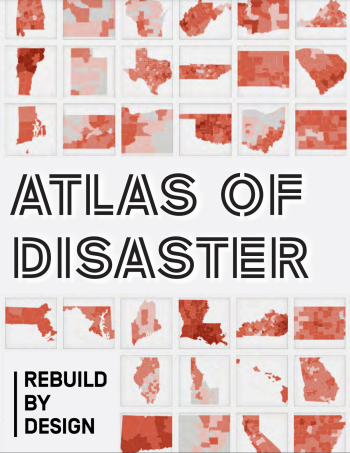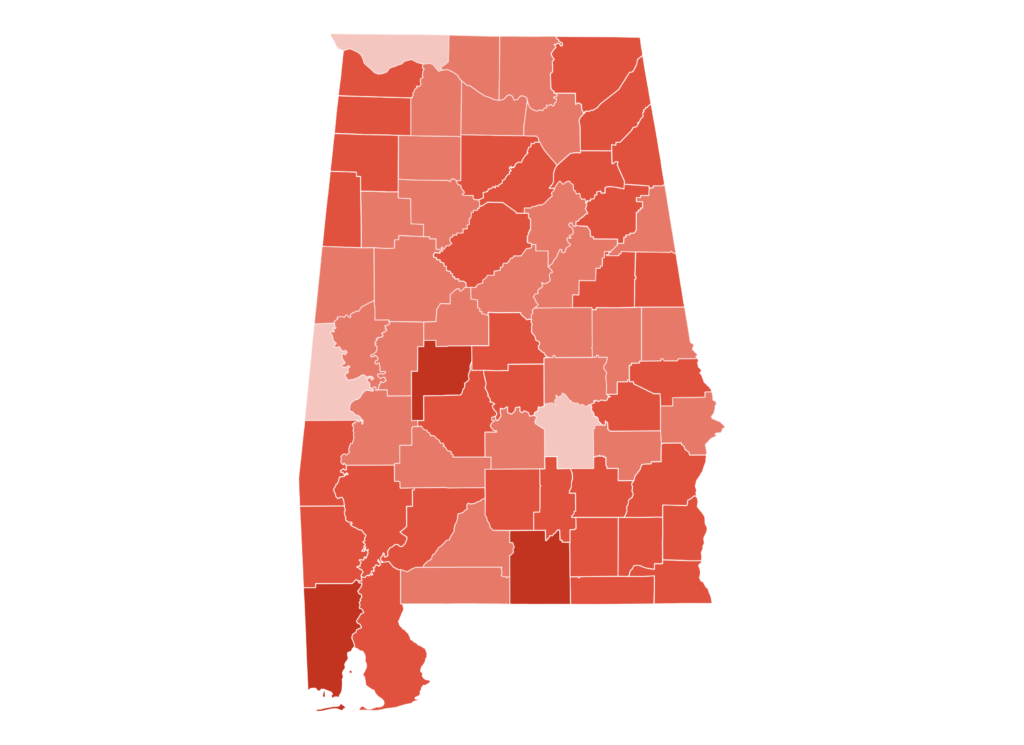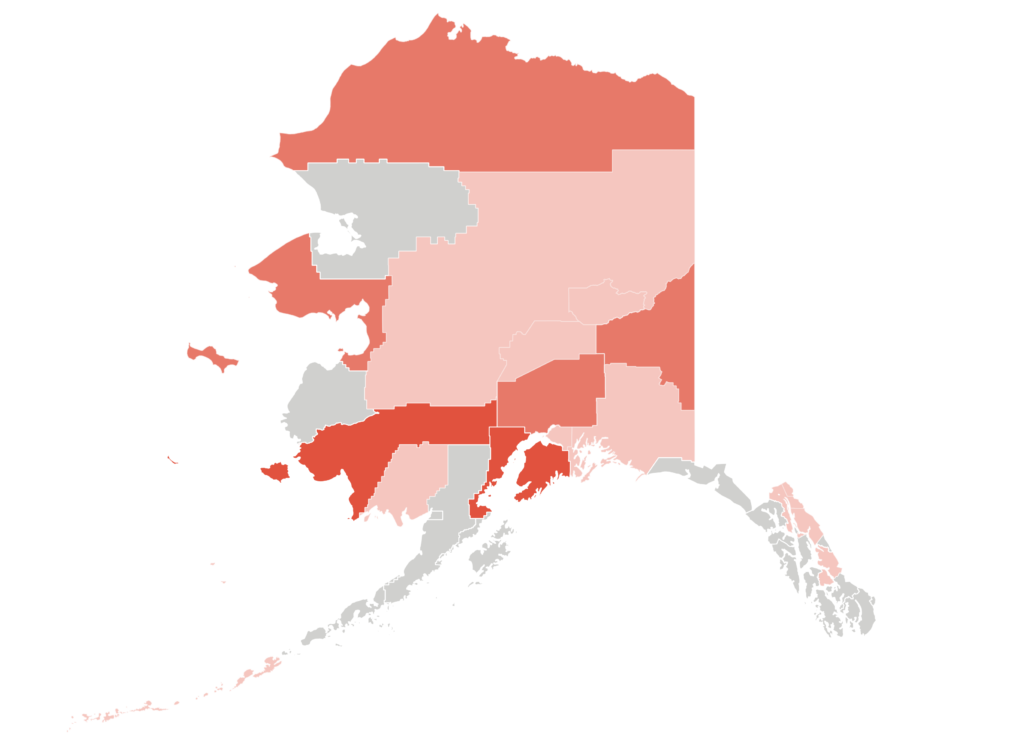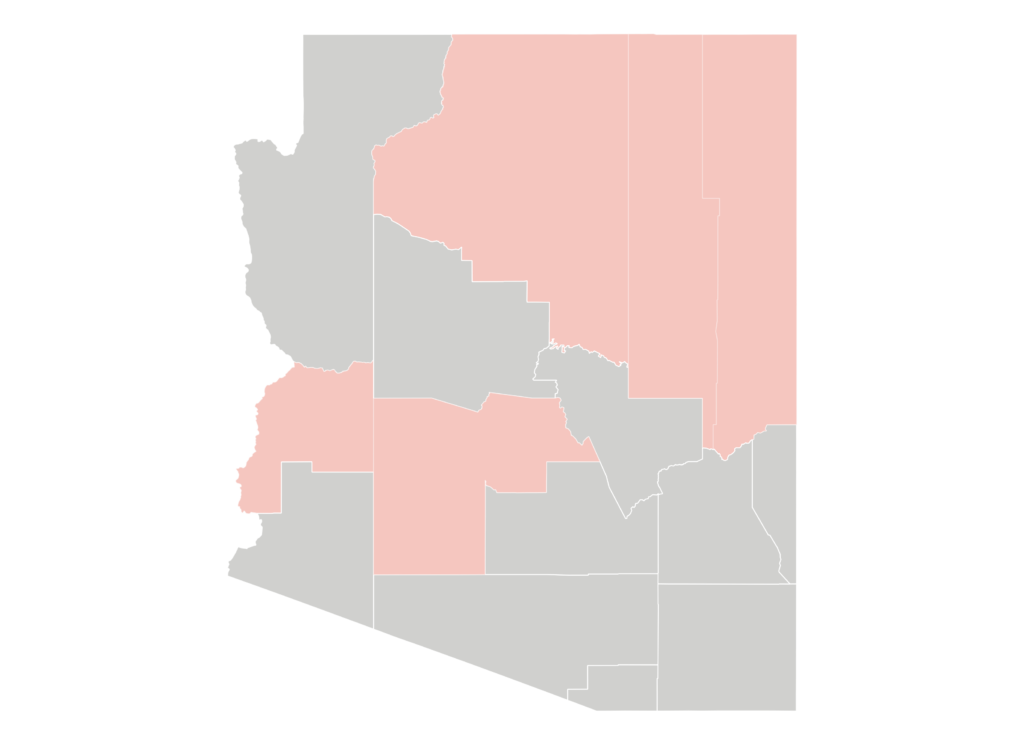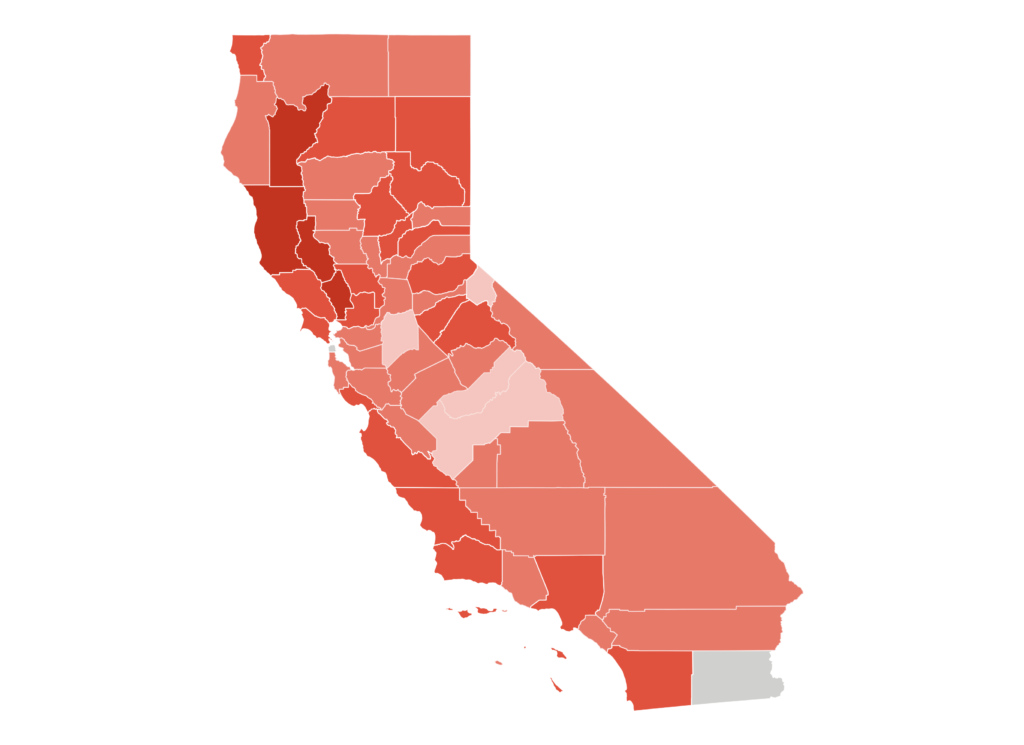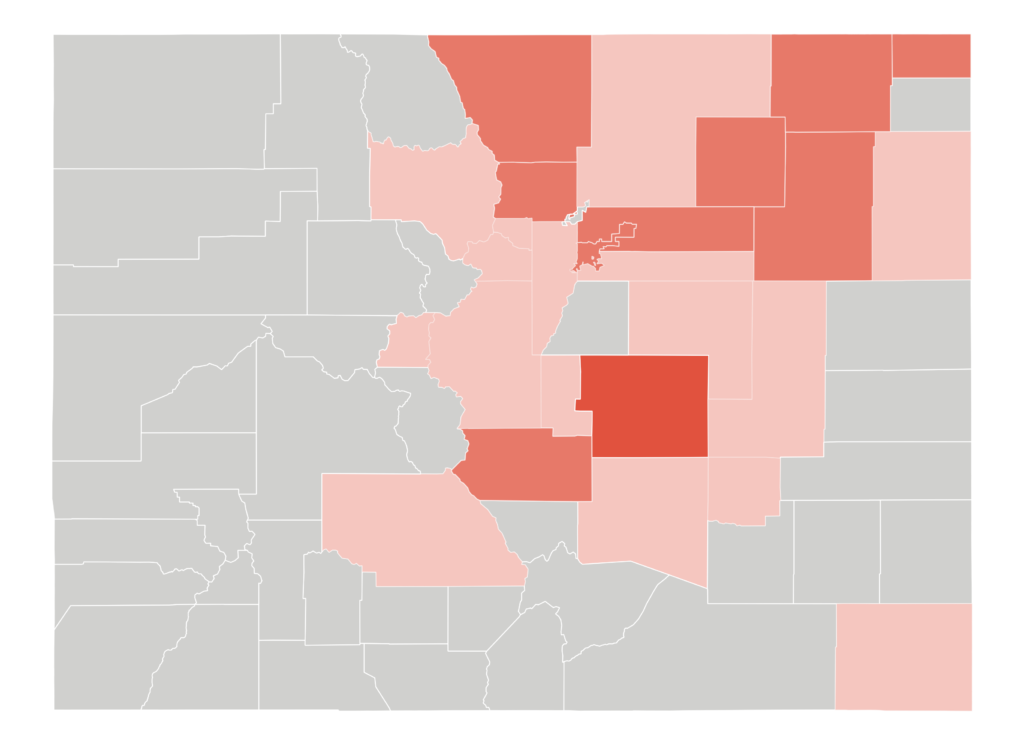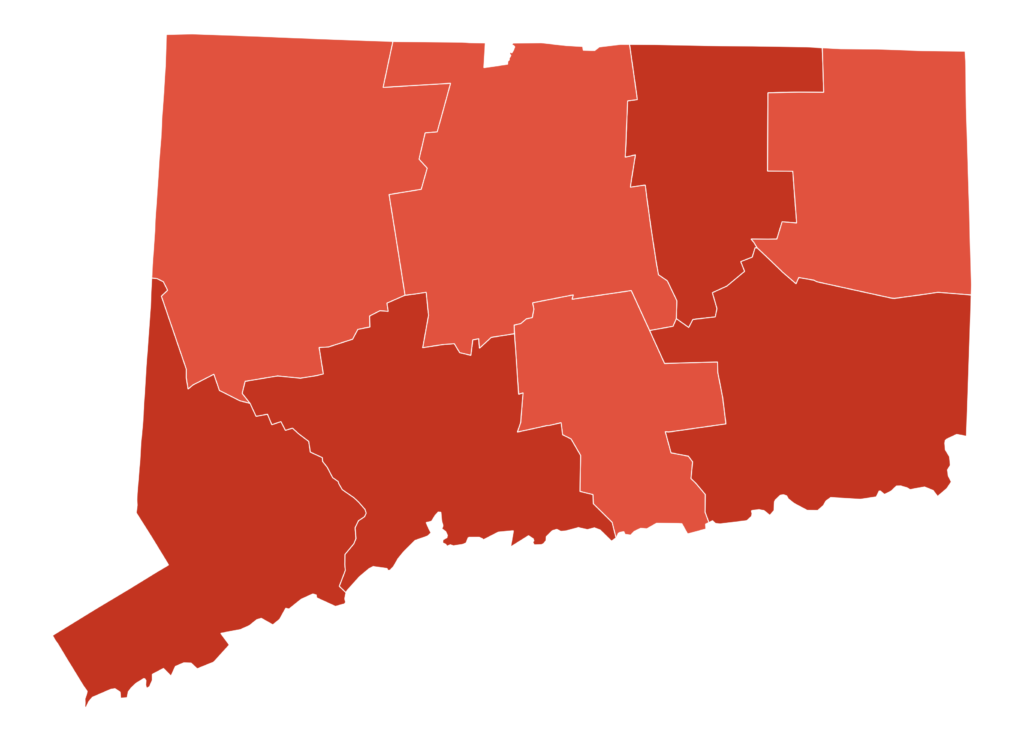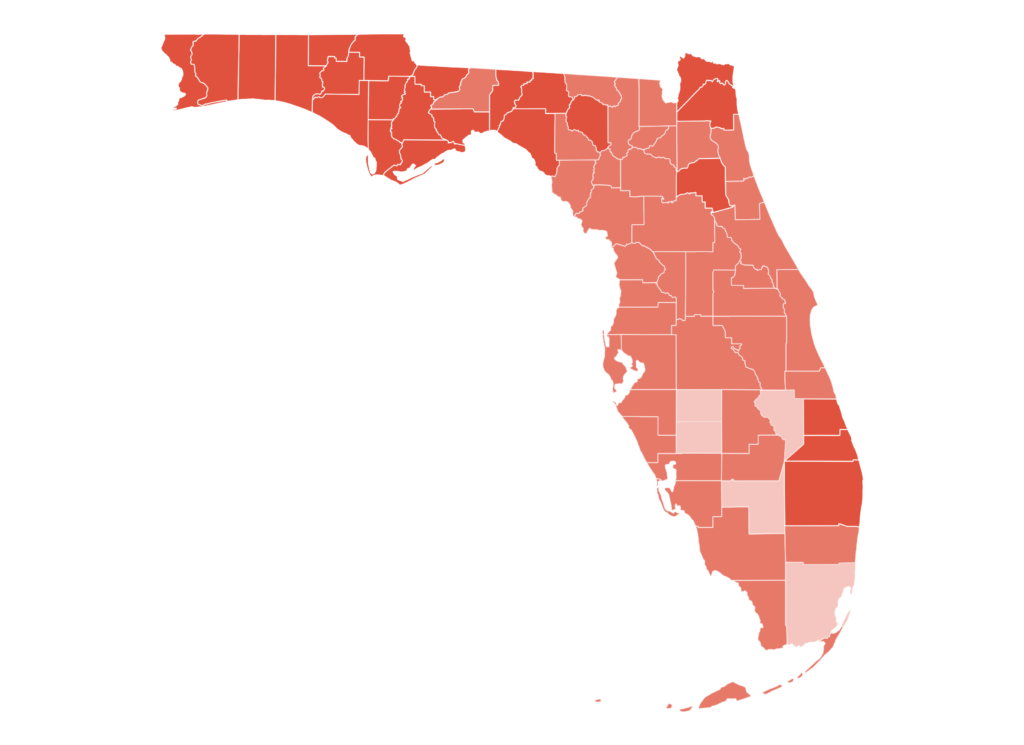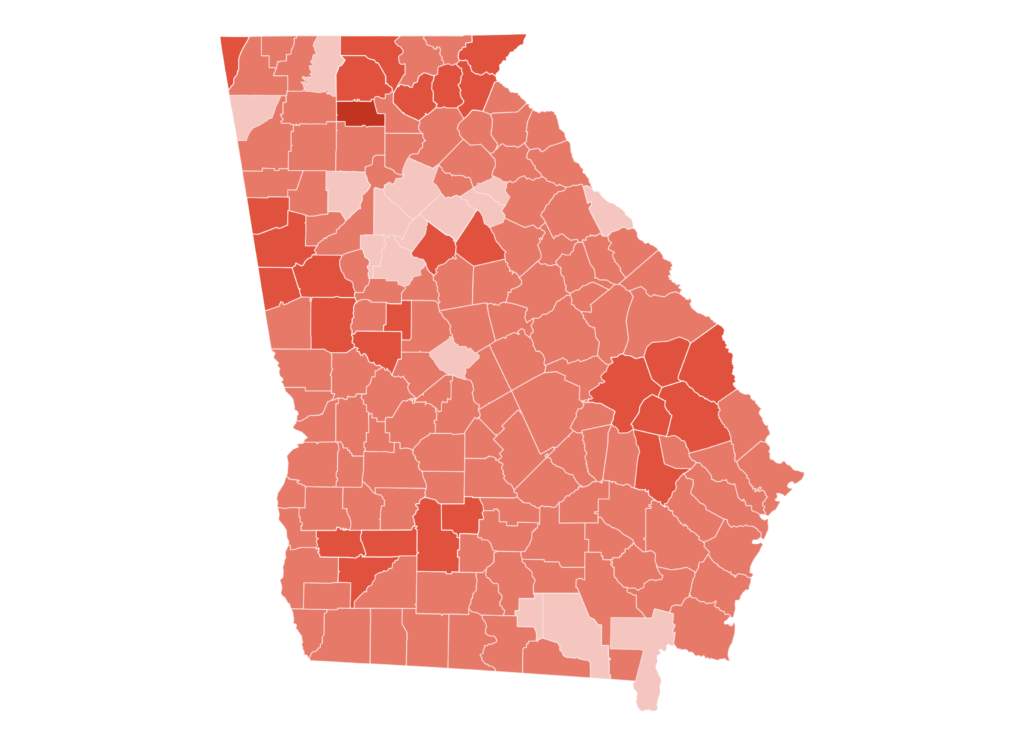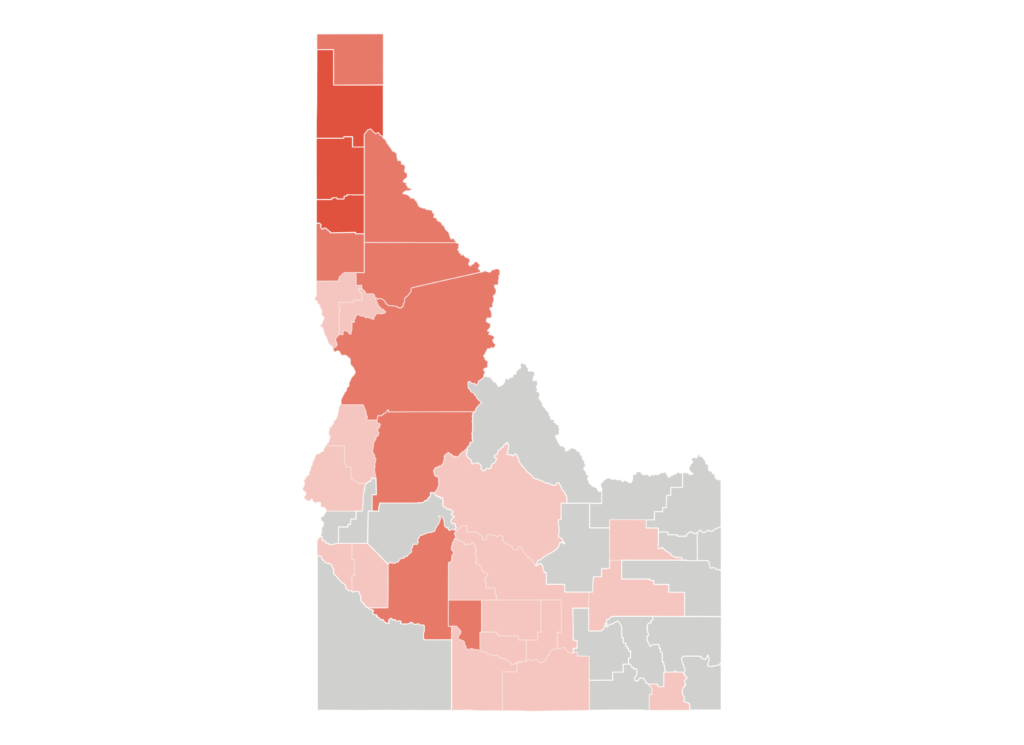An aerial view of the damage of post-tropical storm Sandy in Belmar, New Jersey in the U.S. Photo by: Tim Larsen / Governor’s Office
ATLAS OF ACCOUNTABILITy (2011-2023)
Ninety-one percent of congressional districts include a county that has received a federal disaster declaration for an extreme weather event between 2011 and 2023. These events impact both urban and rural, Democratic and Republican-held districts alike. In 2023 alone, the U.S. experienced 28 separate billion-dollar climate disasters, with more than three million people displaced. We can do better.
RANKING OF CLIMATE DISASTERS 2011-2023
States with Highest Disaster Count
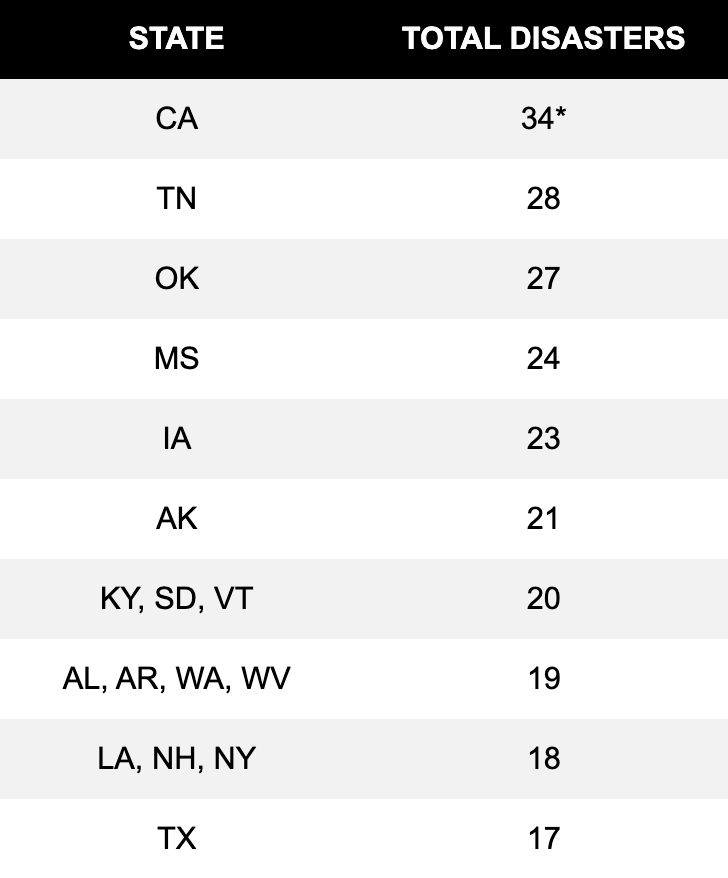
*In instances where tribal land is affected, federal disaster declarations may count the same event twice.
Highest Per Capita Disaster Assistance
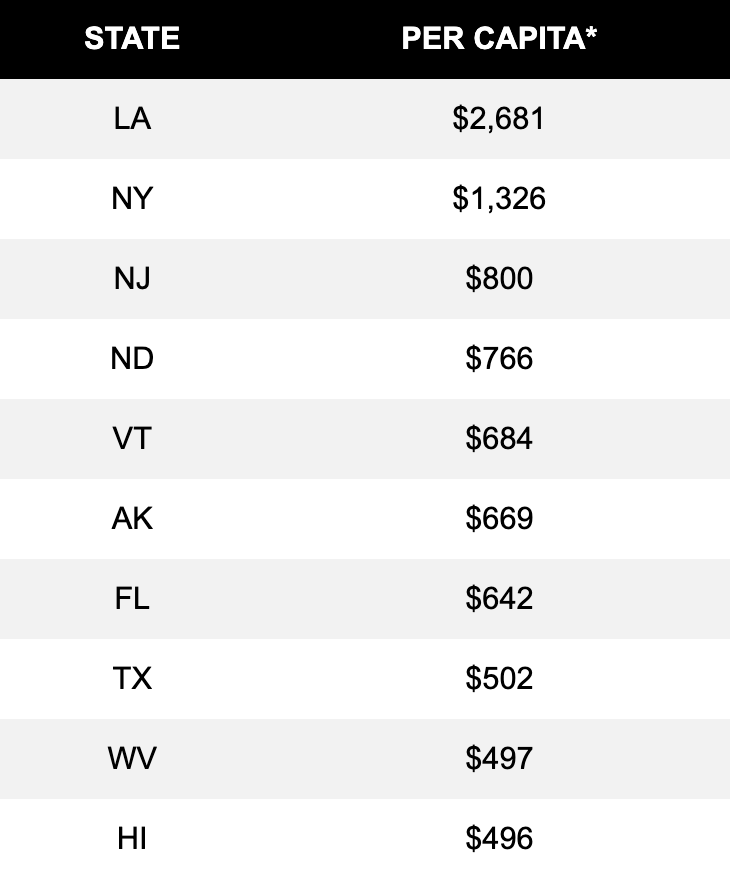
*Per capita is calculated using FEMA & HUD CDBG-DR federal post-disaster funds.
Counties with Highest Disaster Count
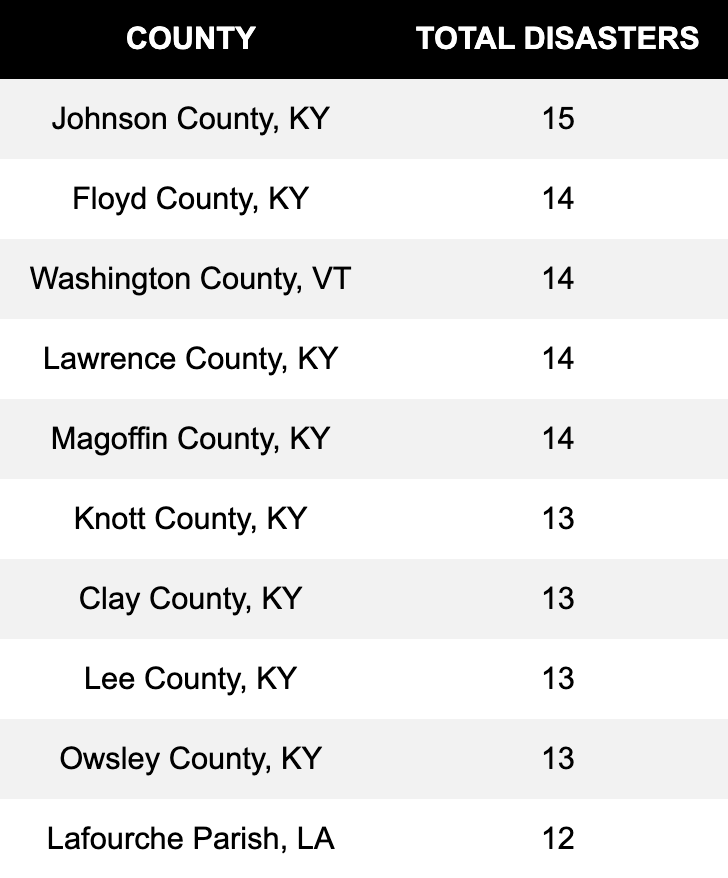
FINDINGS FOR U.S. CLIMATE DISASTERS 2011-2023
72% of STATES HAD 10 or more DISASTERS
Between 2011-2023, 36 states, representing 72% of the U.S., experienced ten or more major disaster declarations. Additionally, half of the states have had all counties impacted.
34 DISASTERS IN CALIFORNIA
California has received 34 major federal disaster declarations – the highest in the nation. A portion of those disasters declarations are for tribal governments.
3 states had 5 or more DISASTERS IN every COUNTY
In Louisiana, New Jersey, and Vermont, all counties have experienced 5 or more major disaster declarations.
15 disasters in johnson county, KY
Johnson County, Kentucky, had the highest number of major disaster declarations between 2011-2023. It is part of Kentucky’s Congressional District 5. Washington County in Vermont (At-Large Congressional District) and Lafourche Parish in Louisiana (Congressional District 1) are also ranked among the top ten.
70% of Counties with 10 or more disasters
are represented by Republicans in Congress, while 30% are represented by Democrats.
$1 INVESTED IN PRE-STORM ADAPTATION CAN SAVE $11 LATER
According to the National Association of Building Sciences, investing in pre-storm adaptation has a 11:1 payback for building code enhancements, 7:1 for riverine flooding, and 13:1 for earthquakes. Investing saves taxpayer dollars.
Note: Extreme heat is not included in this analysis, as FEMA does not declare heat waves as federal disasters despite being the number one weather-related cause of death in the U.S. according to NOAA.
Terms: “Major Disaster Declaration” as issued by the President for severe events beyond Local or State control, “Climate Disaster” as extreme weather events worsened by climate change (excluding e.g. biological), “FEMA Public Assistance” as funding for disaster response and recovery, and “FEMA Hazard Mitigation” as funding to reduce future disaster risks tied to the same climate event.
Disaster Count Across All Congressional Districts

ATLAS OF DISASTER
In 2022, Rebuild by Design released Atlas of Disaster, in collaboration with APTIM and iParametrics and an unbelievable team of engineers, researchers, finance experts, data managers, and volunteers.
The report identifies, analyzes, and synthesizes different data sets and ideas into an accessible compendium of county-by-county climate impacts.
ATLAS OF DISASTER TABLE OF CONTENTS:
- There is No Turning Back
- Funding the Problem, Not the Solution
- Overlooking the Deadliest Risk: Extreme Heat
- The outsized impact of drought
- Cost of Inaction: We are Already Paying
- Mapping the Impact
- Guide to Building a Collaborative Program
- Financing Resilient Infrastructure
- Cost-Benefit Reform
- Recommendations
- Appendix
STATE BY STATE RISK MAPS BY COUNTY 2011-2021
WE CAN WORK TOGETHER
While these numbers seem bleak, there are actions we can take to protect communities lives and livelihoods. Rebuild by Design is calling for:
- Shifting post-disaster federal dollars for pre-disaster funding so communities can in invest infrastructure before they suffer.
- Creating new sources of dedicated funding such as investigating state voter referendums, surcharges on certain types of insurance coverage (e.g., property and casualty), and state-level superfund laws.
- Mandating that U.S. insurance companies take into account mitigation measures when pricing insurance policies, giving policyholders incentives to take small actions that will save all taxpayers money, just as FEMA does with the National Flood Insurance Program’s Community Rating System.
- Creating better infrastructure: ensuring that every piece of new infrastructure is built to withstand climate events to the life cycle of that infrastructure; is designed infrastructure to address both physical and social vulnerabilities, thus multiplying taxpayers investments.
- Amending the Stafford Act to ensure that heat waves are treated the same as other federal disasters, deploying resources to communities who have been suffering with no end in sight.
Atlas of Accountability is based on research and data sources provided by the following:
- FEMA Data: Disaster declarations for climate events occurring 2011-2023, courtesy iParametrics
- County Districts: Geographic boundaries from U.S. Census TIGER/Line Shapefiles (2023)
- Congressional Districts: Geographic boundaries with congressional representation from USDOT BTS
- Population: U.S. Census ACS 2018-2022 (5-Year Estimate)
